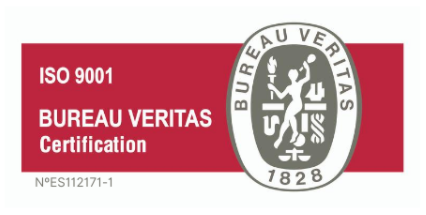Production efficiency is a key metric for all companies, as it allows them to measure the performance of their processes and, consequently, their capacity to generate income. Measuring production efficiency is essential for your factory to be a success story like those of our customers.
This aspect takes on special relevance when it comes to the industry, since the poor optimization of a single scenario can have a major impact on product quality, economic performance and even end-customer satisfaction.
Although it may seem a complicated task, in this article we will show you how to measure production efficiency in a simple and effective way. With some keys, we can lay the foundations on which to build a valid measurement system and with the support of software such as Mesbook. By the way, we recommend you to read before this post about lean manufacturing.
What is production efficiency?
Efficiency in production can be defined as the ratio between the resources used and the output generated. In other words, it is about doing more with less.
Production efficiency is important because it allows companies to reduce costs, improve the quality of their products and/or services and increase competitiveness.
There are several ways to measure it in a general way:
On the one hand, the productivity index measures actual production based on planned operating hours.
The technical efficiency index measures the percentage of output generated by a company in relation to resources. In other words, how much use has been made of the resources invested.
It should be emphasized that production efficiency is a key concept in the economy and applies to all sectors of economic activity, regardless of whether they are part of the industrial sector or not.
How is production efficiency measured?
Production efficiency is an important metric used to measure the specific performance of a company within its individual processes.
It can be measured in many different ways, but some of the main indicators include downtime, setup time, model changeover time and number of units produced per hour.
Other production efficiency metrics include the number of errors per unit, lead time, product quality and cost per unit. Along these lines, you will be interested to know how to calculate oee in a factory.
Tips to improve factory efficiency
But how to measure production efficiency when referring specifically to the industrial sector? This is a question that many factory managers ask themselves. Efficiency in any type of industrial production is vital to the success of a company. If we cannot measure it, we cannot improve it.
Here are some tips that can help us achieve this:
- Define key metrics.
Key metrics are the indicators that will tell us whether the production process is efficient or not. The most common ones include the time of each process, the performance of the equipment, the quality level and the number of errors or defective products.
- Establish objectives for each metric.
Targets will help us measure your plant's progress toward efficiency. Of course, we must be sure to set realistic, measurable and achievable targets.
- Track metrics in real time.
Tracking key metrics on the fly will allow us to see which areas of the production processes need improvement. This will make it easier to detect bottlenecks and determine what changes need to be made to improve efficiency.
- Analyze the data.
The data we obtain will not tell us anything by itself. We will need to analyze them to find the causes of efficiency problems and in which processes they occur. This will undoubtedly facilitate the decisions we will make later on.
- Implement improvements.
Once we have identified problem areas in the production process, we will implement planned improvements to correct them. These improvements may include changes in process design, the acquisition of new equipment or the training of personnel.
- Evaluate the results.
After implementing the improvements, we will revisit the data to ensure that the desired objectives are being achieved. If the improvements have not corrected the problems we estimate, we will return to step 4 and begin the cycle again until the desired level of success is achieved.
Efficiency is a key variable for the success of any company. In this article, we have tried to give an overview of production efficiency and some of the factors to take into account when measuring it.
The important thing is to understand the fundamentals of efficiency measurement and apply them appropriately to optimize the company's results.
But undoubtedly, in addition to knowing how to measure production efficiency, we must have a software that facilitates the workin the collection of information and the display of results. We invite you to get to know the different Mesbook solutions, so that you can get the most out of your industrial processes. Ask for more information.




